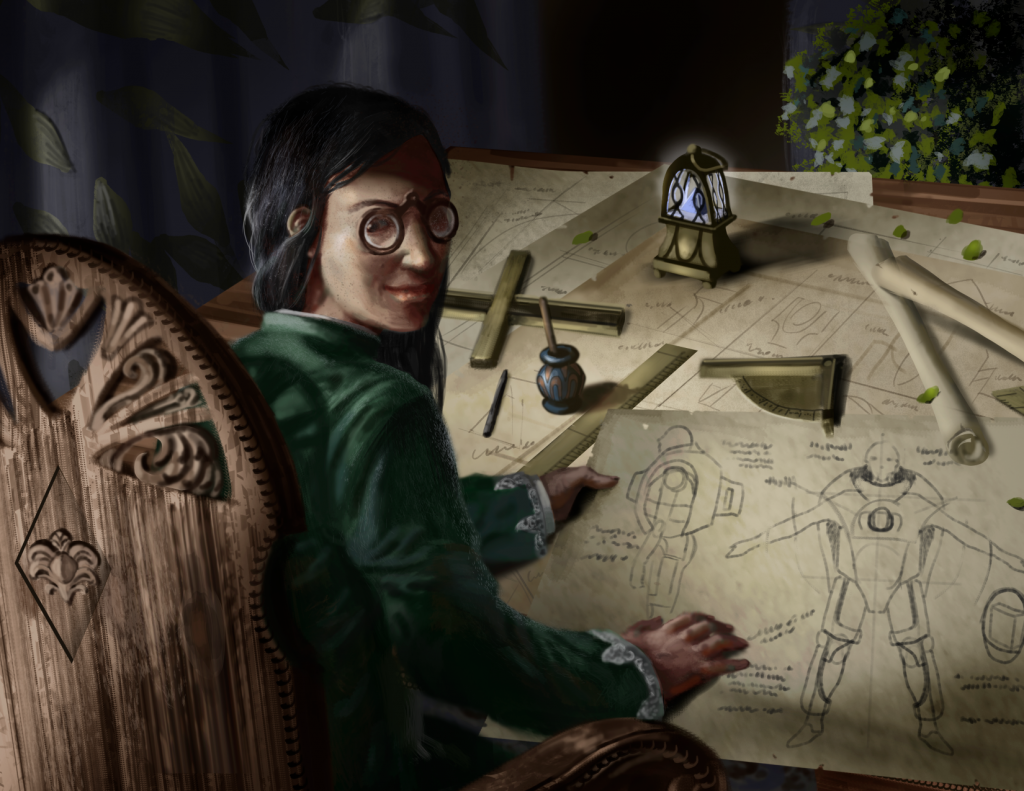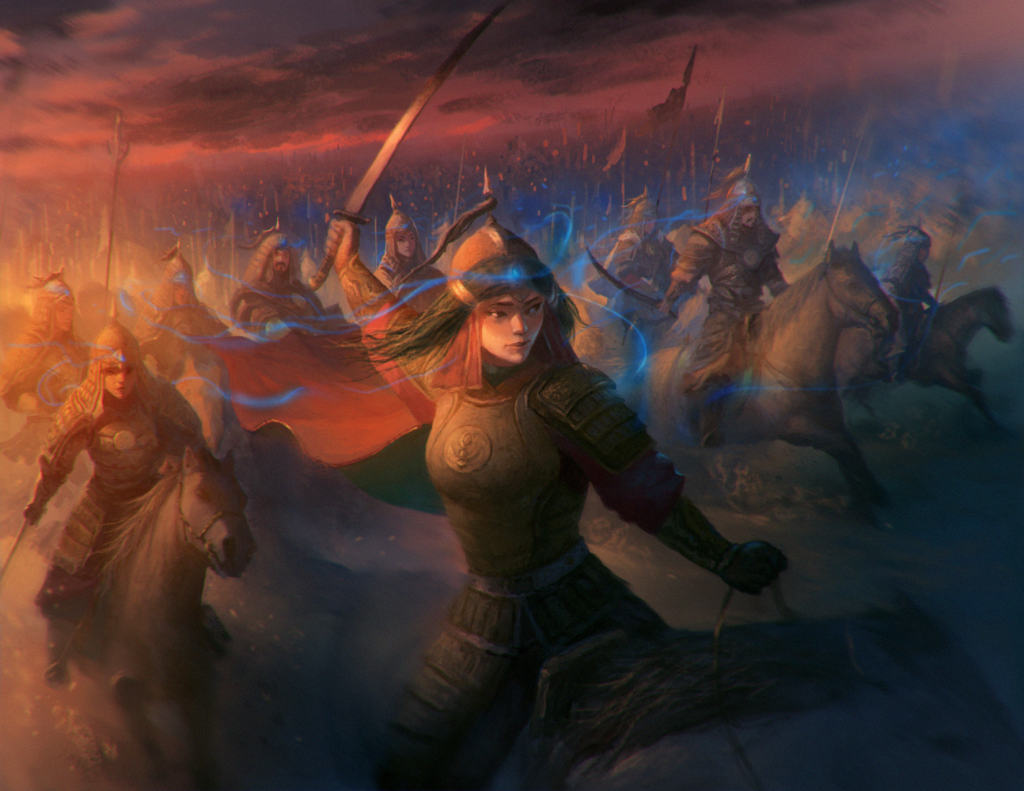I am planning to launch Worldbreakers, my new two-player card game, on Kickstarter on March 1. As part of my research I interviewed Carlo Gozzi, a prolific backer who pledged over $10,000 to 330 projects over the past decade. Carlo offers a unique perspective about the backer side of Kickstarter. You can find the original interview on YouTube. I edited it for brevity and clarity below.
Elli: Hi Carlo! Tell me about your background with Kickstarter.
Carlo: I started using Kickstarter about 10 years ago. The first game I backed was Pizza Party, a three player game that came in a pizza box. Since then I backed many projects, and today I am more selective in the things that I back and do more research. Over the past ten years, I spent over $10,000. The biggest Kickstarter I got in a single pledge was Cthulhu Wars from Sandy Petersen. It had 50 millions minis and rules and, being a huge Lovecraft fan, I could not resist.
Elli: I can safely say that you pledged to more than a hundred projects.
Carlo: Yes. I’ve pledged to approximately 330 projects. The pledge amount varies from $5 to $100, on average. Over $100 happens, but it’s rare.
Elli: How do you typically hear about new projects?
Carlo: Usually Facebook, sometimes the board game page, sometimes on Kickstarter directly (such as the main page or newsletter).
Elli: Not directly from friends or influencers?
Carlo: Usually not really from influencers or friends. There’s another feature on Kickstarter where you can follow people and when they back something or they publish something, you instantly receive a notification. That is pretty helpful to hear about new projects that you may or may not wanna check out.
Elli: When you find a project that strikes your fancy, how do you usually browse through it?
Carlo: If something in the project appeals to my eye then I will then check the video to know a little bit more about it. If the video sounds interesting, then I will study the pledge level carefully: how much to spend in order to get the game, what are the add-ons, what are the stretch goals. Then I will check the reputation of the project creator by clicking on their profile. I will review past projects, see if any were canceled, any delivery glitches, updates, anything in the comment section.
Some companies build a stellar reputation over time and I know that if I back from them then they always deliver. One example is Stonemaier Games and Jamey [Stegmaier]. Stonemaier did Viticulture and Scythe, Jamey is a model to follow for anybody that want to use Kickstarter.

Elli: You mentioned that checking past projects is a powerful indicator. Do you have any advice for new designers who have no past projects and want to establish this confidence?
Carlo: I think that the main thing is reputation, a positive history of any kind. Taking yourself as an example, you involved yourself in the Android: Netrunner community during the FFG [Fantasy Flight Games] years. You were out there, being helpful, answering question, talking strategy, setting up tournaments. Your passion and involvement was obvious from many different platforms. You have an established reputation within a small community of players that know you. You can translate that beyond the Android: Netrunner community.
Elli: Thank you for your kind words! If I understand you correctly, it’s really all about reputation. That reputation could come from past Kickstarter projects but it could also come from other communities.
Carlo: Correct. One way or another, reputation is everything. Going back to Stonemaier Games, [Jamey] started on Kickstarter and look where he is right now.
If you have a couple of minutes, please check out the Worldbreakers “How to Play” video! Subscribe to my YouTube channel to make sure you get the latest videos.
Elli: Could you recommend any red flags that designers should absolutely avoid in their Kickstarter project?
Carlo: Deliver what you promise. There are occasions where somebody promises a stretch goal and it doesn’t happen. One sensible spot is the delivery date: you should deliver on time or close to the time. If there is some glitch or other issues, send news or updates on a regular basis, weekly or monthly: “I hit a problem, but here is what is going well”. I had a good friend who went through the Kickstarter process and I had insight into the project creator side. They had a year of delays because of many glitches. We talked about it and I know that it wasn’t his fault, it just happened due to factory problems. Give lots of updates.
Elli: I know from my own research that delivery date is really important and you’re better overestimating by a lot and delivering early than being late.
Carlo: Correct. People are used to delays and will not complain too much if there’s a one to three month delay. After three months, people will start asking questions.
Elli: Let’s talk about pricing. You mentioned $100 as a pricing sweet spot. What are your thoughts about pricing?
Carlo: There are a lot of games (not only miniature games) that can sell for $100 plus. It all depends on your [the backer’s] budget. There are a lot of games that surprise me that are over $100, and I also found some really nice things for $20-$30. The price is one factor that I review within all the checkups that I do when researching a new game.
Elli: We discussed marketing and strategy but haven’t mentioned the games themselves. In particular, I want to ask about solo or single-player modes: Are they important for you? How do you factor them into your purchase decision?
Carlo: That is something that I take a lot into consideration nowadays: why spend hundreds of dollars on a game that you will only have the chance to play once or twice? I like to be able to play solo games. Not everybody who might enjoy your game lives in a big city or have access to a large pool of players. They might need to drive 45 minutes to play. This is where the solo mode can come in, with different challenges or a campaign mode. In the Kickstarter campaign, you can offer solo mode in the basic pledge, as a stretch goal, or as an addon.

Elli: As part of your research, do you try the games online with Tabletopia or Tabletop Simulator?
Carlo: I will usually avoid virtual and just stick to my research. Due to COVID I started being involved a little more online, in order to play a few board games on Tabletop Simulator or Tabletopia, to keep in touch with friends all around the world.
Elli: Anything else that you would like to add?
Carlo: I think that Worldbreakers is a great idea. You involve your small community with votes on what cards will look like, card names, etc. It’s nice to be able to vote on topics and influence the game. I know that there’s an option to try the game on Tabletop Simulator, I am looking forward to trying it and playtesting the solo mode.
Elli: Thank you so much for your time.
Carlo: My pleasure. It’s always nice to talk about a passion and share my experience.
Thanks again to Carlo Gozzi for the interview!